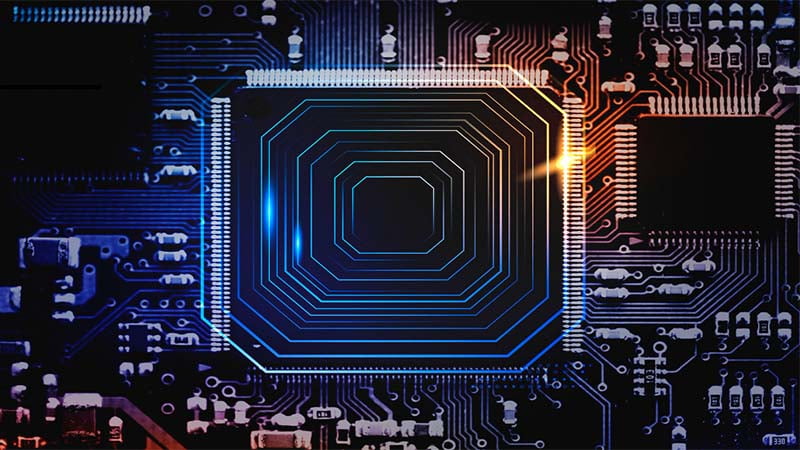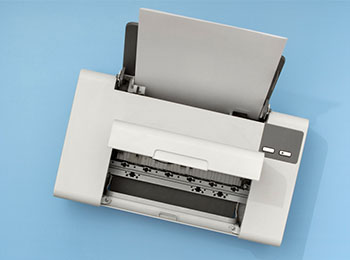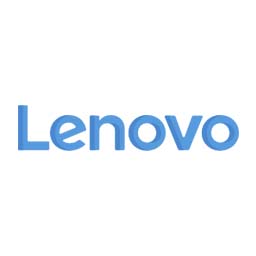Aruba and Cisco Catalyst switches
Aruba and Cisco Switch Catalyst are 2 of the leading switch manufacturers in the networking industry. Both companies offer a wide range of switches that cater to the needs of various network environments. Understanding the features and capabilities of each switch can help network administrators make informed decisions when choosing the right switch for their network.
Aruba switches
Aruba, a subsidiary of Hewlett Packard Enterprise (HPE), specializes in providing networking solutions for enterprise-level networks. Aruba switches are known for their reliability, scalability, and advanced features. They offer a comprehensive portfolio of switches, ranging from small office, industry switches to high-density data center switches.
Aruba switches are designed to support a variety of network requirements, including wired, wireless, and converged networks. They incorporate advanced technologies, such as virtual stacking and high-performance switching fabrics, to enhance network performance and ensure seamless connectivity. These switches also feature built-in security measures, such as user authentication and access control lists (ACLs), to protect the network from unauthorized access and potential threats.
Furthermore, Aruba switches offer centralized management capabilities through their Aruba Central platform. This allows network administrators to easily monitor and control the switches, ensuring efficient network operation and troubleshooting.
Cisco Catalyst switches
Cisco Catalyst switches, on the other hand, are a product line of Cisco Systems, one of the leading networking companies globally. Cisco Catalyst switches are well-known for their robustness, scalability, and extensive feature sets. They cater to a wide range of network sizes, from small businesses to large enterprises.
Cisco Catalyst switches in the UK offer a variety of models and options, including fixed-configuration and modular switches, to accommodate different network requirements. These switches support various technologies, such as Power over Ethernet (PoE), Quality of Service (QoS), and virtual LANs (VLANs), enabling network administrators to prioritize and segment network traffic effectively.
Additionally, Cisco Catalyst switches provide advanced security features, including Network Access Control (NAC) and Secure Shell (SSH), to safeguard the network against unauthorized access and potential cyber threats. They also offer seamless integration with other Cisco networking products, such as routers and wireless access points, to create a unified network infrastructure.
Moreover, cisco ethernet switches can be centrally managed using Cisco’s network management platforms, such as Cisco Prime Infrastructure. This allows for simplified configuration, monitoring, and troubleshooting of the switches, ensuring optimal network performance.
In conclusion, Aruba vs. Cisco switches are 2 prominent players in the networking market, offering a wide range of switches with advanced features and capabilities. Understanding the strengths and differences between Aruba vs Cisco wireless comparison is crucial for network administrators when selecting the right switch for their specific network requirements. Considerations for choosing the right switch for your network
When selecting a switch for your network, there are several key considerations to keep in mind to ensure that you choose the right one for your specific requirements. Here are some factors to consider when comparing Aruba Central vs Cisco DNA switches:
- Scalability: Consider the growth potential of your network and choose a switch that can accommodate your future needs. Both Aruba and Cisco Catalyst switches offer scalability options, but it’s important to evaluate the maximum number of supported devices and the capacity for expansion.
- Performance: Look for switches that can handle the traffic demands of your network. Consider factors such as throughput, packet forwarding rate, and latency. Cisco Catalyst switches are known for their high performance, but Aruba switches also offer strong performance capabilities.
- Feature set: Analyze the specific features and functionalities that your network requires. Consider features like VLAN support, QoS capabilities, security measures, and management options. Both Aruba vs Cisco wireless solutions come with a range of features, so it’s crucial to assess which ones align with your network goals.
- Reliability: Network downtime can have severe consequences for businesses. It’s essential to opt for switches that offer high reliability and redundancy options. Both Aruba and Cisco Catalyst switches have proven track records for reliability, but it can also be helpful to examine customer reviews and testimonials.
- Support and maintenance: Consider the level of support and maintenance provided by the switch manufacturer. Look for readily available technical support, software updates, and warranty options. Both Aruba and Cisco Catalyst offer comprehensive support packages, but it’s advisable to review the specific offerings and evaluate their suitability for your organization.
- Aruba vs Cisco Switch cost: Evaluate the upfront cost as well as the long-term expenses associated with the Aruba vs cisco switch cost. Consider factors such as power consumption, licensing fees, and ongoing maintenance costs. Conducting a cost-benefit analysis can help you make an informed decision about cisco vs Aruba price.
- Integration with existing infrastructure: Assess how well the switch integrates with your existing network infrastructure, including routers, firewalls, and access points. Compatibility and interoperability are crucial to ensure seamless operation.
By carefully considering these considerations, you can make an informed decision when choosing between Aruba and Cisco Catalyst switches. It’s essential to assess your network requirements, evaluate the pros and cons of each option, and make the choice that best aligns with your organization’s needs. Keep in mind that there is no one-size-fits-all solution, and what works for one organization may not be suitable for another.
Performance and Scalability Comparison
When it comes to choosing the right switch for your network, performance and scalability are two crucial factors to consider. Both Aruba and Cisco Catalyst switches offer high levels of performance and scalability, but there are differences worth exploring. This section aims to provide an objective comparison between the two options.
| Category | Aruba | Cisco Catalyst |
| Performance | Aruba switches are designed to deliver exceptional performance, with high throughput and low latency. They adopt the latest technologies, such as deep buffer architecture and advanced hardware ASICs, to ensure smooth and efficient data transmission. Additionally, Aruba switches offer various performance-enhancing features, such as priority queuing, quality of service (QoS) mechanisms, and traffic shaping capabilities. | Cisco Catalyst switches are renowned for their performance capabilities. They leverage advanced processing power and hardware acceleration to optimize packet forwarding and minimize latency. Cisco Catalyst switches also provide a range of features, including intelligent quality of service (IQoS), application visibility, and control (AVC), and network analytics, to optimize performance and deliver a superior user experience. |
| Scalability | Aruba switches provide excellent scalability options to accommodate growing network demands. They offer modular designs that allow for the addition of expansion modules, ports, and stacking capabilities. This modularity enables organizations to scale their networks easily and efficiently. Aruba switches also support virtualization technologies, such as Virtual Switching Framework (VSF), which enables the creation of a single logical switch from multiple physical switches. | Cisco Catalyst switches also boast impressive scalability features. They offer modular chassis designs that support the addition of line cards to expand the number of ports, allowing organizations to scale their networks. Cisco Catalyst switches also support features like a Virtual Switching System (VSS), which enables the clustering of multiple switches into a single logical entity for simplified management and increased scalability. |
In summary, both Aruba vs Cisco wireless comparisons offer high levels of performance and scalability. Aruba switches deliver exceptional performance with advanced technologies and performance-enhancing features. On the other hand, cisco industrial ethernet switches excel in performance optimization and offer a range of features for enhanced performance and user experience. When it comes to scalability, Aruba wifi switches with prices provide modularity and virtualization options, while Cisco Catalyst switches offer modular chassis designs and clustering capabilities. Evaluating your network requirements and comparing them against the specific capabilities of each switch will help you choose the right option for your network.
Feature comparison: Aruba vs. Cisco Catalyst
When choosing the right switch for your network, it is essential to consider the features and capabilities that will best meet your organization’s needs. In this section, we will compare the key features of Aruba switches and Cisco ethernet switches, two popular options in the networking industry.
1. Performance and Scalability
Both Aruba and Cisco Catalyst switches offer high-performance solutions suitable for businesses of all sizes. Aruba switches are known for their optimized performance, with features like intelligent power management and advanced traffic prioritization. Cisco Catalyst switches, on the other hand, are renowned for their scalability, making them ideal for larger networks with higher traffic volumes.
2. Security
Security is a crucial aspect of any network infrastructure. Aruba switches come equipped with advanced security features such as role-based access control (RBAC), secure network access, and secure shell (SSH) for secure remote management. Cisco Catalyst switches offer equally robust security measures, including port security, private VLANs, and access control lists (ACLs) to protect against unauthorized access and network threats.
3. Management and Automation
Efficient management and automation capabilities are essential for network administrators to streamline operations and reduce manual efforts. Aruba switches employ the ArubaOS software, which provides a centralized management interface for easy configuration and monitoring. Additionally, Aruba switches offer built-in support for automated network provisioning and monitoring through Aruba’s Network Analytics Engine (NAE). Cisco Catalyst switches, on the other hand, leverage Cisco’s Network Management System (NMS) for centralized management and deployment. Cisco Catalyst switches also offer automation features through Cisco’s Software-Defined Networking Architecture (SDN) solution, enabling swift provisioning and policy enforcement.
4. Flexibility and Expansion
Both Aruba and Cisco Catalyst switches offer a range of models with varying port densities and form factors to accommodate different network requirements. Aruba switches usually exhibit a more compact design, making them suitable for space-constrained environments. Furthermore, Aruba switches are compatible with Aruba’s wireless portfolio, allowing for seamless integration with wireless access points. Cisco Catalyst switches, on the other hand, offer a wide range of modular options, enabling easy scalability and expansion as the network grows.
5. Pricing
Pricing is a significant factor when selecting a switch for your network. Aruba switches are generally known for their cost-effective solutions, offering competitive pricing without compromising on performance or features. Cisco Catalyst switches in the UK, while typically pricier than Aruba’s offerings, come with the assurance of Cisco’s reputation and extensive support.
In conclusion, selecting the right switch for your network depends on various factors such as performance, security, management capabilities, flexibility, and pricing. Both Aruba and Cisco Catalyst switches offer robust solutions, but your ultimate decision should be based on your specific network requirements and budget constraints.
Management and Security Capabilities
The management and security capabilities of network switches are crucial factors to consider when choosing the right switch for your network infrastructure. Both Aruba and Cisco Catalyst switches offer various features and functionalities to ensure efficient management and robust security.
Aruba Switches
Aruba switches come with a comprehensive range of management options that cater to different network environments. The ArubaOS-CX operating system provides a user-friendly interface for centralized management, making it easy to configure and monitor the switches effectively. The Aruba Central cloud-based management platform offers a convenient way to manage multiple switches across different locations from a single dashboard. This allows network administrators to have a real-time view of the entire network and take proactive measures to ensure network availability and performance.
In terms of security capabilities, Aruba switches offer advanced features to protect against potential threats and unauthorized access. With features like Dynamic Segmentation, Aruba ClearPass, and User Entity Behavior Analytics (UEBA), these switches enable network administrators to enforce access control policies, detect anomalies, and respond to security incidents promptly. This helps organizations maintain network integrity and safeguard critical data.
Cisco Catalyst Switches
Cisco Catalyst switches are renowned for their extensive management capabilities. The Cisco IOS operating system provides a highly configurable command-line interface (CLI) for in-depth switch configuration and monitoring. Alongside the CLI, Cisco offers graphical user interfaces (GUIs) like Cisco Prime Infrastructure, which simplifies network management tasks through a centralized dashboard.
In terms of security, Cisco Catalyst switches offer robust features to protect against network threats. Integrated security features like Port Security, DHCP Snooping, and IP Source Guard help prevent unauthorized access and mitigate various types of attacks. Cisco Identity-Based Networking Services (IBNS) provide granular control over user access privileges, reducing the risk of unauthorized access.
Choosing the Right Switch
When determining which switch is best suited to your network, it is essential to consider your specific management and security needs. Aruba switches emphasize simplicity and ease of use, with a focus on centralized management through cloud-based platforms. On the other hand, Cisco Catalyst switches provide a wide array of management options, including powerful CLI and GUI interfaces.
From a security perspective, both Aruba and Cisco Catalyst switches offer robust features to protect against threats and unauthorized access. However, the choice may depend on the specific security requirements of your organization.
In conclusion, both Aruba vs cisco wireless solutions provide robust management and security capabilities. The decision ultimately comes down to the specific needs and preferences of your network infrastructure. It is advisable to thoroughly evaluate the management and security features of both switches and select the one that meets your organization’s requirements most effectively.
Cost comparison: upfront and operational expenses
When it comes to choosing the right switch for your network, cost is always a critical factor to consider. In this section, we will compare the upfront and operational expenses of Aruba and Cisco Catalyst switches to help you make an informed decision.
Upfront expenses
The upfront expenses include the cost of purchasing the switches and any additional hardware or licenses required for installation. Both Aruba and Cisco Catalyst switches have a wide range of models and configurations available, catering to different networking needs. However, it’s essential to note that Cisco Catalyst switches generally tend to be priced higher than their Aruba counterparts. This is primarily due to Cisco’s brand reputation and market position.
While Aruba switches may have a lower initial cost, it’s essential to evaluate if the features and capabilities they offer align with your network requirements. Investing in a switch that cannot meet your demands may lead to additional costs down the line.
Operational expenses
Operational expenses encompass the costs associated with managing and maintaining the switches over their lifespan. These costs include power consumption, software updates, licensing fees, and technical support.
Aruba switches often have a more user-friendly interface and require less specialized IT expertise for configuration and maintenance. This can result in lower operational expenses, as less time and resources are needed for ongoing management.
On the other hand, Cisco Catalyst switches are known for their robustness and reliability, often requiring minimal downtime and maintenance. While the initial investment may be higher, the reduced operational expenses over time could balance out the higher upfront cost.
It’s worth noting that the operational expenses also depend on the size and complexity of your network. Complex networks with higher traffic volumes may require more advanced features and support, which can drive up operational costs for both Aruba and Cisco switches.
Conclusion
When considering the upfront and operational expenses of Aruba and Cisco Catalyst switches, it’s crucial to strike a balance between cost and performance. While Aruba switches may offer a lower upfront cost and potentially lower operational expenses, it’s essential to assess if they meet your network requirements. On the other hand, Cisco Catalyst switches may come with a higher price tag, but their robustness and reliability can result in long-term cost savings.
Ultimately, the right switch for your network will depend on your specific needs, budget, and resources. It’s recommended to consult with networking professionals and evaluate the features, capabilities, and support offered by both Aruba and Cisco Catalyst switches before making a decision.
Support and Warranty Considerations
When choosing a network switch for your organization, it is important to consider the support and warranty options offered by the manufacturers. Both Aruba and Cisco Catalyst switches come with robust support and warranty plans, but there are differences worth noting.
Aruba Support and Warranty
Aruba offers comprehensive support and warranty options for their switches. They provide 24/7 technical support through various channels, including phone, email, and live chat. This ensures that you have access to assistance whenever you need it, helping to minimize any network downtime.
Aruba’s standard warranty typically covers hardware replacement for a specified period, usually one year from the date of purchase. Depending on the product, they may also offer extended warranties that can be purchased separately.
In addition to their warranty coverage, Aruba offers software maintenance contracts, which provide access to software updates and patches. These contracts ensure that your switch remains up-to-date with the latest features and security enhancements.
Cisco Catalyst Support and Warranty
Cisco Catalyst switches also come with a range of support and warranty options. Cisco provides 24/7 technical support through its TAC (Technical Assistance Center) team. They offer phone and online support, allowing you to reach out for help whenever an issue arises.
Cisco Catalyst switches typically come with a limited lifetime warranty, which covers defects in materials or workmanship. This warranty ensures that you can get replacements or repairs for faulty hardware without incurring additional costs. Cisco also offers the option to purchase extended warranties, providing additional coverage beyond the standard warranty period.
In terms of software updates, Cisco offers software maintenance contracts similar to Aruba. These contracts provide access to software updates and patches, ensuring that your switch remains secure and up-to-date.
Factors to Consider
When evaluating the support and warranty options, there are several factors to consider:
- Availability of Support: Both Aruba and Cisco offer 24/7 technical support, but it’s worth considering the responsiveness and effectiveness of their support teams. Look for customer reviews and feedback to get a sense of their support quality.
- Warranty Coverage: Consider the duration and coverage of the manufacturer’s warranty. Look for any limitations or exclusions that may apply.
- Extended Warranty Options: Evaluate the cost and benefits of purchasing extended warranties. Determine if they align with your organization’s requirements and budget.
- Software Maintenance: Consider the importance of regular software updates and patches for your network’s security and functionality. Evaluate the costs and benefits of purchasing software maintenance contracts.
By carefully considering the support and warranty options offered by Aruba and Cisco Catalyst, you can choose a switch that best aligns with your organization’s needs and provides peace of mind in case of any hardware or software issues.
Future-proofing your network with Aruba and Cisco Catalyst
When it comes to networking infrastructure, it is crucial to consider future-proofing to ensure that your network can handle the evolving needs of your organization. Both Aruba and Cisco Catalyst offer solutions that can help future-proof your network, but they have different approaches and features that you should consider.
Aruba’s networking solutions, such as the Aruba Switch Series, are designed with scalability and flexibility in mind. These switches offer high performance and support advanced features like virtual stacking and advanced security protocols. Aruba’s switches also have built-in intelligence that allows them to optimize network traffic and handle increasing demands effectively.
On the other hand, Cisco Catalyst switches have a long-standing reputation for their reliability and robustness. They offer a wide range of switch models to cater to various network requirements. Cisco Catalyst switches also provide advanced features like network automation, application visibility, and analytics to help manage and optimize network performance.
Both Aruba and Cisco Catalyst switches support the latest networking standards, such as PoE (Power over Ethernet) and 10 Gigabit Ethernet, to ensure compatibility with current and future network devices. However, Cisco Catalyst switches have an advantage with their support for Cisco’s proprietary technologies like Cisco StackWise and Cisco Virtual Switching System (VSS), which can enhance performance and resiliency in certain network configurations.
The decision to choose between Aruba and Cisco Catalyst ultimately depends on your specific network needs and priorities. If you value scalability, flexibility, and intelligent performance optimization, Aruba’s switches may be the preferable choice. On the other hand, if reliability, robustness, and advanced network management features are your primary concerns, Cisco Catalyst switches may be the better option.
When future-proofing your network, it is important to consider factors beyond the switch itself. Both Aruba and Cisco Catalyst offer comprehensive network management platforms that can simplify the configuration, monitoring, and troubleshooting of your network. It is advisable to evaluate these management solutions to ensure a seamless and efficient network management experience.
In conclusion, future-proofing your network with Aruba and Cisco Catalyst involves carefully assessing your network requirements and priorities. Both Aruba and Cisco vendors in London UK offer advanced features and technologies that can help scale and optimize your network. By choosing the right switch and network management platform, you can ensure that your network is ready to handle future demands and support the growth of your organization.
Making the decision: which switch is right for your network?
When it comes to selecting the most suitable switch for your network, several factors need to be considered. Both Aruba and Cisco Catalyst offer a range of switches with different features and capabilities. To make an informed decision, it is essential to evaluate your network requirements and compare them with the offerings of these two brands.
Here are some key considerations to help you determine which switch is the right fit for your network:
- Network size and scale: Assess the size and scale of your network. Aruba switches are often preferred for smaller networks or branch offices, while Cisco Catalyst switches are well-suited for larger enterprise networks. Consider the number of users and devices that will be connected to the network, as well as the potential for future growth.
- Performance and throughput: Evaluate the performance requirements of your network. Both Aruba and Cisco Catalyst switches offer various options in terms of speed and throughput. Consider the bandwidth needs of your applications and the level of performance that your network demands.
- Features and functionality: Compare the features and functionality offered by both Aruba and Cisco Catalyst switches. Look for features such as VLAN support, quality of service (QoS) capabilities, security features, and management options. Consider whether any specific features align with your network requirements and business objectives.
- Compatibility and integration: Consider the existing infrastructure and ecosystem in your network. Evaluate how well the new switch integrates with your current hardware and software. Check for compatibility with other networking devices, management systems, and protocols that you are already using.
- Reliability and support: Look into the reliability and reputation of both Aruba and Cisco Catalyst switches in London. Consider factors such as product quality, vendor reliability, and customer support. Check for warranties, service level agreements (SLAs), and the availability of technical support.
- Cost and budget: Budgetary considerations are paramount when selecting a switch. Compare the pricing of Aruba and Cisco Catalyst switches and evaluate the total cost of ownership, including maintenance and support expenses. Consider any additional licensing fees or feature upgrades that may be required.
Remember, it is crucial to evaluate your network requirements comprehensively and choose the switch that aligns best with your specific needs. Conduct thorough research, consult with experts if needed, and consider pilot testing to ensure the compatibility and suitability of the chosen switch.
By carefully considering these factors, you can make an informed decision and choose the right switch that will meet the needs of your network, both now and in the future.
You can also read this:
Network Switches





















